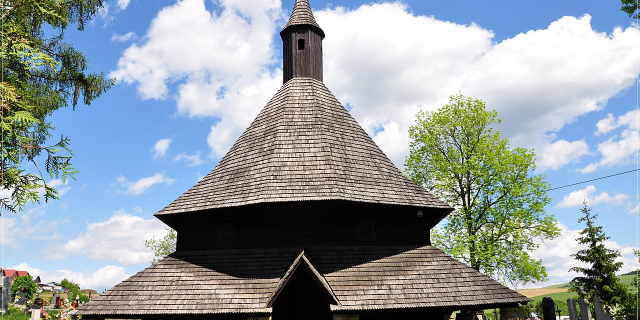Bardejov (; Hungarian: Bártfa, German: Bartfeld, Rusyn: Бардеёв, Ukrainian: Бардіїв, Polish: Bardejów) is a town in North-Eastern Slovakia. It is situated in the Šariš region on a floodplain terrace of the Topľa River, in the hills of the Beskyd Mountains. It exhibits numerous cultural monuments in its completely intact medieval town center. The town is one of UNESCO's World Heritage Sites and currently maintains a population of about 32,000 inhabitants.
The territory of present-day Bardejov has attracted settlers since the Stone Age. However, the first written reference to the town dates back to the 1240s, when monks from Bártfa complained to King Béla IV of Hungary about a violation of the town's borders by Eperjes (today Prešov, Slovakia). By that time, the important church of Sv. Aegidius (St. Giles) had already been built.
Heavily fortified in the 14th century, the town became a center of trade with Poland. More than 50 guilds controlled the flourishing economy. Bártfa gained the status of a royal town in 1376, later becoming a free royal town. In October 1410 at the Battle of Bardejov the Polish King Władysław II Jagiełło defeated the King Sigismund of Hungary and Croatia, who was later on crowned as King of Germany, King of Bohemia and Holy Roman Emperor.[1][2]
The town's golden age ended in the 16th century, when several wars, pandemics, and other disasters plagued the country.
Beginning in the first quarter of the 18th century, the situation began to improve. Slovaks and Hasidic Jews came into Bártfa in large numbers. By the end of the century, the population of the town had regained the level of the 16th century.[3] The burghers' houses were rebuilt or modified in keeping with current architectural fashion. A Jewish quarter with a synagogue, slaughterhouse, and ritual baths developed in the north-western suburbs. New churches and bridges were built, as well.
During the Reformation, Michal Radašin was called as town pastor.
Despite further fires in the last quarter of the 19th century, the town continued to thrive, thanks to major industrialization projects in the region. In 1893, a railway was opened connecting Eperjes to Bártfa.[4] However, it declined again following its annexation and the establishment of the first Czechoslovak Republic, and became a backward farming region. World War II saw a worsening in the economic situation, though little damage from bombardment. Bardejov was taken by Soviet troops of the 1st Guards Army on 20 January 1945.
In 1950, Bardejov was declared a protected city core and extensive restoration of its cultural heritage began. These efforts culminated in Bardejov receiving the European Gold Medal by the International Board of Trustees in Hamburg in 1986 – the first town in Czechoslovakia to receive the award.[5] On November 20, 2000, Bardejov was selected by UNESCO as one of its World Heritage Sites, recognized for its Jewish Suburbia and historic town center. In November 2010, the city marked the 10th anniversary of its inscription on the UNESCO World Heritage list.
Today, Bardejov is known mainly for its authentic old town square, which due to extensive restoration and preservation of its Medieval, Renaissance, and Gothic architecture has made Bardejov a popular tourist destination. The town draws on its rich heritage to further develop cultural traditions, such as an annual trade fair and the Roland Games (commemorating its medieval past).[5]
Like many European small towns, Bardejov maintained a strong Jewish population before World War II and the Holocaust.[citation needed]
In March 2006, the Bardejov Jewish Preservation Committee was founded as a non-profit organization by Emil Fish, a survivor of Bergen-Belsen concentration camp who was born in Bardejov.[6] In July 2005, Mr. Fish returned to Bardejov with his wife and son for the first time since 1949. His response to the disrepair and dilapidation of the synagogues and the Jewish cemetery was a resolve to restore and preserve these properties. The committee is composed of Bardejov survivors, their descendants and friends, and others interested in commemorating the vanishing Jewish communities of Eastern Europe. Today, the committee's stated mission is to: "restore the Jewish properties of Bardejov, Slovakia"; "build awareness of the cultural and historical significance of Jewish life in Bardejov and Slovakia"; and "advance knowledge of Jewish ancestry and heritage."[7]




























Add new comment